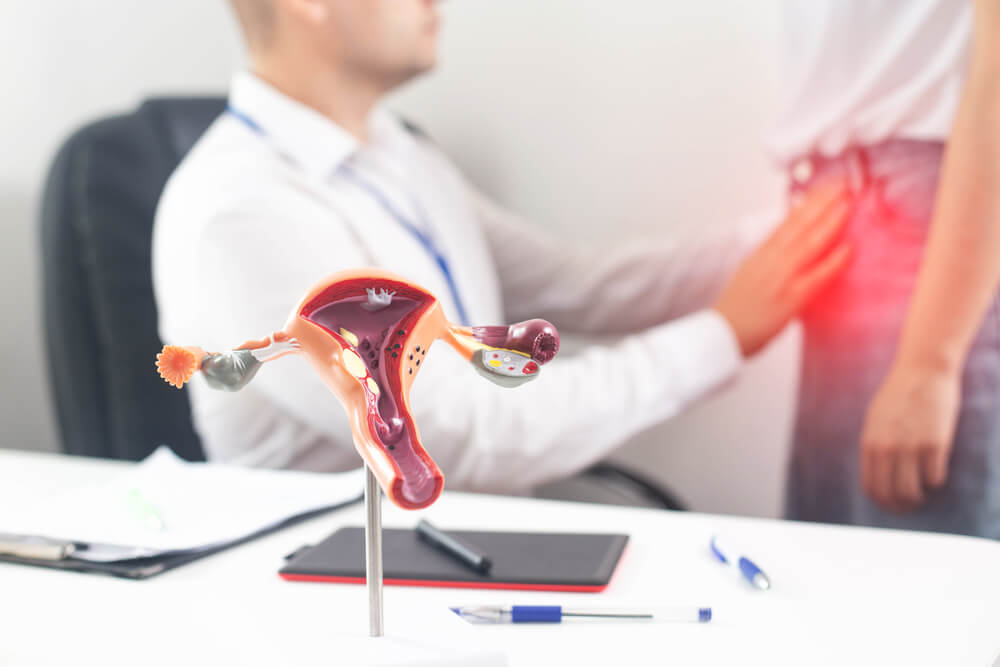Delving into the realm of uterine fibroids, this exploration aims to unravel the complexities surrounding this common yet often misunderstood condition. Understanding the causes, recognizing symptoms, and exploring available treatment options empowers women to navigate the challenges posed by uterine fibroids with knowledge and confidence.
That said, in this article, the experts at Women’s Health Partners have compiled all the information on uterine fibroids you need to understand their nature.
Defining Uterine Fibroids: Unmasking the Enigma
Uterine fibroids, also known as leiomyomas or myomas, are noncancerous growths of the uterus that often appear during childbearing years. These firm, rubbery growths can vary in size, ranging from tiny seedlings to large masses that can distort the shape of the uterus. Though the exact cause of uterine fibroids remains elusive, various factors contribute to their development, and understanding these elements is crucial in demystifying this enigmatic condition.
Common Causes of Uterine Fibroids: Unraveling the Origins
While the precise causes of uterine fibroids are not fully understood, certain factors play a role in their development. Genetic predisposition, hormonal fluctuations, and estrogen and progesterone levels are believed to influence the growth of fibroids. Ethnicity, family history, and age also contribute to the likelihood of developing uterine fibroids. By unraveling these factors, women gain insight into the origins of this condition, laying the foundation for informed discussions with healthcare providers.
Recognizing Symptoms of Fibroids: Navigating the Signs
Uterine fibroids often present with a range of symptoms that can significantly impact a woman’s quality of life. The most common symptoms of uterine fibroids are:
- Menstrual changes, including heavier and prolonged periods,
- Pelvic pain and pressure, frequent urination,
- Backache

In some cases, fibroids may lead to reproductive challenges, such as infertility or recurrent pregnancy loss. Recognizing these symptoms is pivotal for seeking timely medical intervention and developing a tailored approach to managing uterine fibroids.
Available Treatment Options: Tailoring Solutions for Uterine Fibroids
Uterine fibroids, with their diverse impact on women’s health, demand a comprehensive approach that considers the nuanced interplay of symptoms, reproductive health considerations, and individual preferences. The spectrum of available treatments spans from less invasive measures to surgical interventions, providing women with a range of options to address the unique challenges posed by uterine fibroids.
Medication for Symptom Management: Balancing Hormones for Relief
For those grappling with the symptoms of uterine fibroids, hormonal medications stand as a viable option. Birth control pills, a familiar element of women’s reproductive health, are often prescribed to regulate menstrual cycles and alleviate associated symptoms. Hormonal intrauterine devices (IUDs) offer a localized approach, releasing hormones directly into the uterus to manage fibroid-related symptoms. In cases where more aggressive hormonal control is required, GnRH agonists step in, temporarily inducing a menopausal state to shrink fibroids and provide relief from symptoms. This conservative approach aims to offer symptomatic relief while preserving reproductive capabilities.
Non-Invasive Procedures: Gentle Alternatives with Effective Results
Non-invasive procedures present a middle ground between conservative measures and surgical interventions, offering effective alternatives with minimal disruption. Uterine artery embolization (UAE) is a procedure that involves blocking the blood supply to fibroids, leading to their gradual shrinkage. This technique, performed without surgical incisions, provides relief from symptoms while allowing for a quicker recovery compared to traditional surgical options. Focused ultrasound surgery (FUS) represents another non-invasive avenue, utilizing ultrasound waves to target and destroy fibroids without the need for incisions precisely. These procedures prioritize minimal disruption, making them appealing options for those seeking effective results with reduced recovery times.
Surgical Interventions: Tailored Solutions for Severe Cases
In cases where symptoms are severe or when fertility concerns are not paramount, surgical interventions become crucial considerations. Myomectomy, a targeted surgical procedure, involves the removal of individual fibroids while preserving the uterus. This approach is particularly relevant for women who wish to maintain their reproductive capabilities. On the other end of the spectrum, hysterectomy, the removal of the uterus, offers a definitive solution for women who have completed their family or for whom other treatments have proven ineffective or unsuitable. While a more invasive option, hysterectomy provides a permanent resolution to the challenges posed by uterine fibroids. Surgical interventions are carefully considered, taking into account the severity of symptoms, the impact on reproductive health, and the unique circumstances of each individual.
Tailoring Treatment Plans to Individual Needs: Collaborative Decision-Making
The selection of an appropriate treatment for uterine fibroids is a collaborative endeavor between women and their healthcare providers. Factors such as the size and location of fibroids, the severity of symptoms, reproductive goals, and overall health are carefully weighed to create a tailored treatment plan. Open and transparent communication ensures that the chosen approach aligns with individual preferences and addresses the specific challenges posed by uterine fibroids.
Considering Individual Factors: Personalizing Uterine Fibroids Treatment
The selection of a suitable treatment for uterine fibroids is a collaborative decision between women and their healthcare providers. Factors such as the size and location of fibroids, the severity of symptoms, reproductive goals, and overall health contribute to tailoring a personalized treatment plan. Open communication and shared decision-making empower women to participate in their care actively, ensuring that the chosen approach aligns with their individual needs and preferences.
Lifestyle Modifications: Enhancing Well-being Amid Uterine Fibroids
Complementing medical treatments, lifestyle modifications play a crucial role in managing uterine fibroids and promoting overall well-being. Maintaining a healthy lifestyle, including regular exercise, a balanced diet, and stress management, contributes to hormonal balance and may alleviate some symptoms associated with fibroids. By adopting these practices, women actively participate in their journey of uterine fibroids management.

Seeking Professional Guidance: A Navigational Beacon in Uterine Fibroids
If symptoms suggestive of uterine fibroids arise, seeking professional guidance is paramount. Consulting with a gynecologist or healthcare provider allows for a thorough evaluation of symptoms, potential diagnostic tests, and the development of a personalized treatment plan. Don’t hesitate to reach out for support, as understanding and addressing uterine fibroids can significantly improve overall well-being and quality of life.
In Conclusion
Uterine fibroids, with their intricacies and varied impact, are best approached with a combination of understanding, medical expertise, and personal empowerment. By demystifying the causes, recognizing symptoms, exploring treatment options, and embracing lifestyle modifications, women can actively navigate the challenges posed by uterine fibroids. Seeking professional guidance ensures that the journey is informed, collaborative, and tailored to individual needs, fostering a renewed sense of well-being and empowerment amid the complexities of uterine fibroids.
That said, if you have any more questions pertaining to the topic of heavy menstrual bleeding, feel free to schedule an appointment with our experts today. They are more than ready to address all of your concerns and questions.





